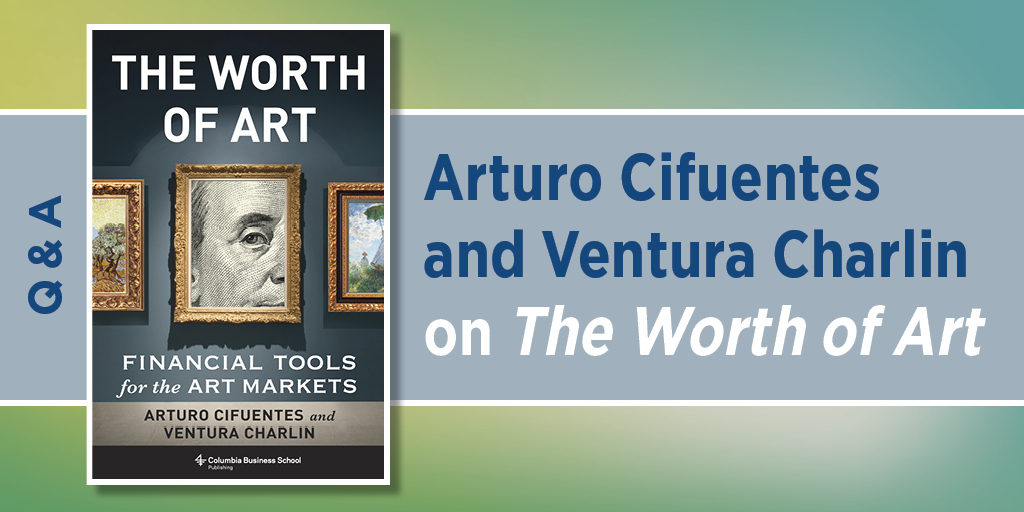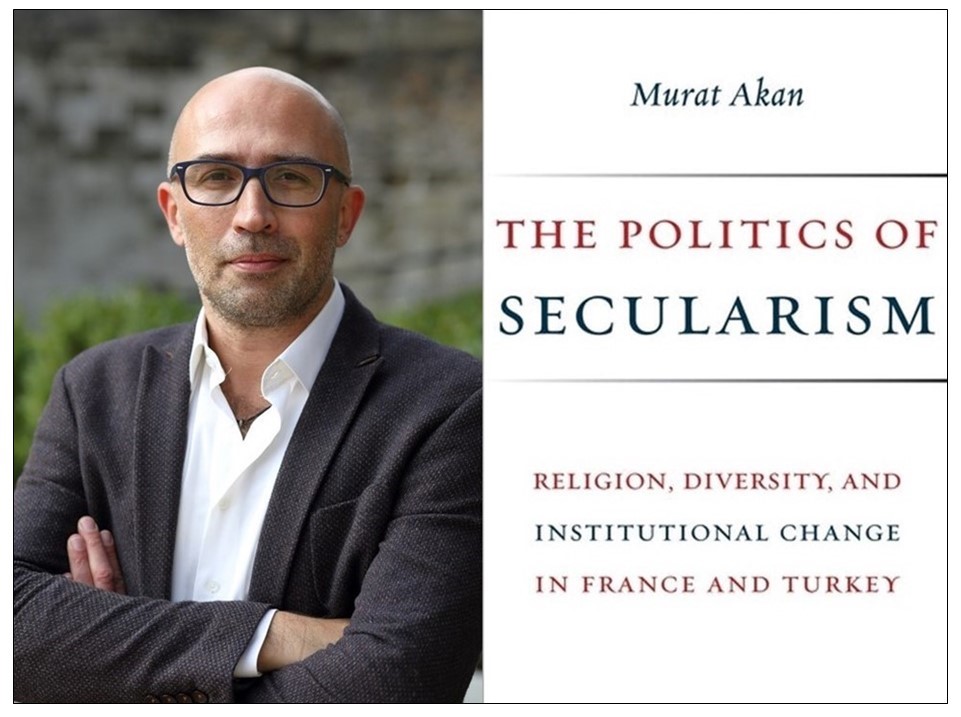Q&A: Arturo Cifuentes and Ventura Charlin on The Worth of Art

The Worth of Art: Financial Tools for the Art Markets is based on a simple fact that people often overlook: artworks, notwithstanding their aesthetic merits, can be very valuable financial assets. Therefore, auction data—that is, actual prices paid for artworks, as opposed to estimates based on subjective parameters—provide a rich and reliable source of information regarding the art markets. Additionally, and perhaps surprisingly, analyses based on auction data can help to illuminate debates about the intrinsic qualities of certain artworks—that is, to validate or contradict some hypotheses advanced by art historians and critics. The main analytical tool behind the analyses presented in the book is basic college-level applied statistics. However, the most important ideas and conclusions are explained in ways that can be grasped intuitively by any curious reader, including readers with no formal mathematical background.
Q: Why did you write The Worth of Art?
Arturo Cifuentes & Ventura Charlin: Although there are many excellent books about the art markets, they are mostly descriptive (qualitative) in nature. They do not deal with specific tools aimed at analyzing the art markets from the viewpoint of an investor. We believe this is the first book that addresses these issues.
Q: Can analytical tools employed in relation to more conventional markets (e.g., stocks, bonds) be used to study the art markets?
Cifuentes & Charlin: The art market presents many differences when compared to, for example, the stock market—namely, low liquidity, longer investment tenors, sparse data, and heterogenous assets. This means that the standard financial toolkit must be adapted and reformulated before dealing with art-related data.
Q: Is it a good idea to invest in art?
Cifuentes & Charlin: Investing in art is, to some extent, like investing in real estate: condos in Miami behave very differently than storage facilities close to an airport in the Midwest. By the same token, we cannot really talk about the art market in general as there are several submarkets, each with its own dynamics. For example, the market for paintings is very different from the market for sculptures or photographs. And even within a specific submarket—say paintings—there are several segments, each moved by different drivers (e.g., old masters, modern art, contemporary art). In summary, depending on what and when you buy, art can be a very good, or a not so good, investment.
Q: Can you give us an example of how timing can affect the value of art?
Cifuentes & Charlin: Let’s focus on the last twenty-five years. Renoir, on average, has been a poor investment. Picasso, despite the extraordinary prices achieved by some of his paintings (The Women of Algiers, version O, fetched $179 million in 2015), has delivered, again, on average, returns that are comparable to those of an investment-grade corporate bond portfolio, but with much higher volatility. On the other hand, works by Jean-Michel Basquiat, Zao Wou-Ki, and Gerhard Richter have delivered returns comparable to those of the most profitable venture capital investments. Richter’s paintings have appreciated more than tenfold in the last twenty years.
Q: And what about diversification? Can art be a good diversifier?
Cifuentes & Charlin: Yes indeed. Even artists who by themselves (that is, taking them on a stand-alone basis) do not offer very attractive returns can improve the diversification of a portfolio if added in the “proper amount.” Picasso is a good example. In our book we analyze the case of a typical portfolio (stocks, bonds, and gold) whose risk profile could be improved by adding some exposure to Picasso. On the other hand, there are artists who can only deteriorate a portfolio, regardless of the level of exposure considered. Each case is different. In the book we show how to assess the potential advantages of adding art to an existing portfolio.
Q: Talking about Picasso, since 2023 marks the fiftieth anniversary of his death, did you find anything interesting or new when you examined Picasso’s data for your book?
Cifuentes & Charlin: Actually, we did. Let us recall for a second, although this tends to offend art scholars, that paintings are really expensive real estate. In short, their prices can be expressed in dollars per square centimeter. If we look at how the market prices Picasso’s paintings depending on his age at the time of creation, we can plot what is called the creativity curve. Early Picassos (that is, when he was in his late-twenties) command prices around $2,000/cm2; late Picassos (when he was 80 or older) are priced around $400/cm2. The creativity curve shows a steady downward trend. This pricing is interesting because it validates what many art scholars have said about Picasso, which is, in short, that he was the ultimate revolutionary artist, someone who produced his best and most innovative work when he was young, and that the quality of his output declined as he aged.
Q: And what about his portraits of women? He painted a lot of women.
Cifuentes & Charlin: Picasso painted all his lovers and wives many times. More than 600 of these portraits have hit the market during the last twenty-five years. And the verdict is clear: the market likes his portraits of women more than any other subjects. However, the price differences among the women are significant. Portraits of Marie-Thérèse Walter, who he always painted in a peaceful manner, average more than $2,000/cm2, while Olga Khoklova and Dora Maar are tied on a distant second place (around $1,300/cm2). Jacqueline Roque, his last companion and wife, is at the other end of the spectrum at $350/cm2. Incidentally, and just by way of comparison, keep in mind that a luxury co-op on Manhattan’s Upper East Side is priced at only $1.2/cm2.
Q: Let’s go back to the initial point you made about the differences between the art markets and more conventional financial markets such as stocks or bonds. Any other differences?
Cifuentes & Charlin: When buying a work of art, you need to worry about provenance and condition—in essence, where the artwork came from and whether it has been cared for properly. When buying a stock, you do not have such considerations. That makes the art markets more interesting!
Q: Any predictions about the future developments in the art markets?
Cifuentes & Charlin: We think blockchain technology will do very little to alter the dynamics of the art markets. Fractional ownership, however, which does not need to rely on blockchain, seems much more promising as a way to open up the high-end market to all investors.




